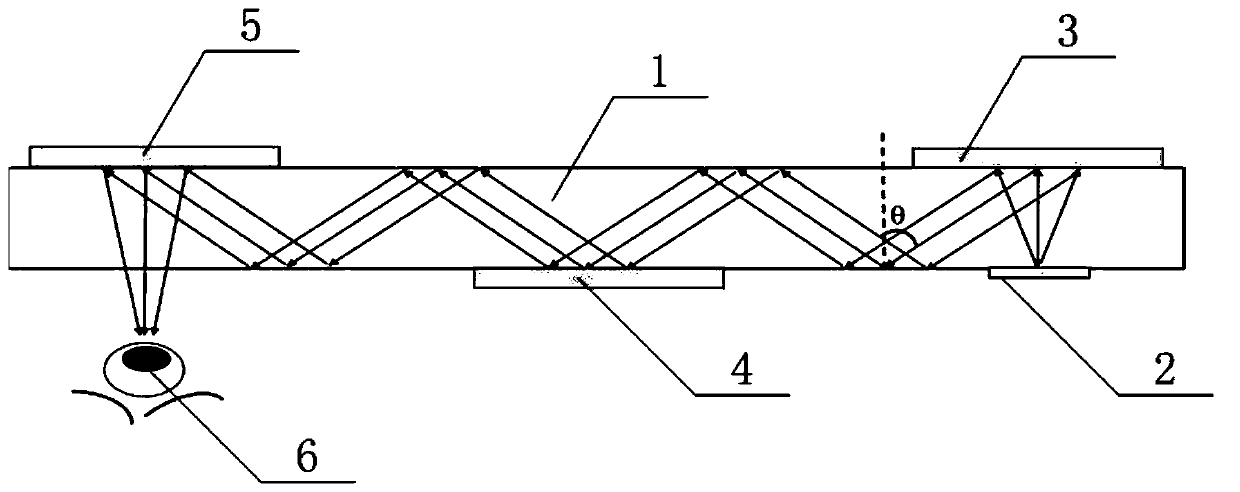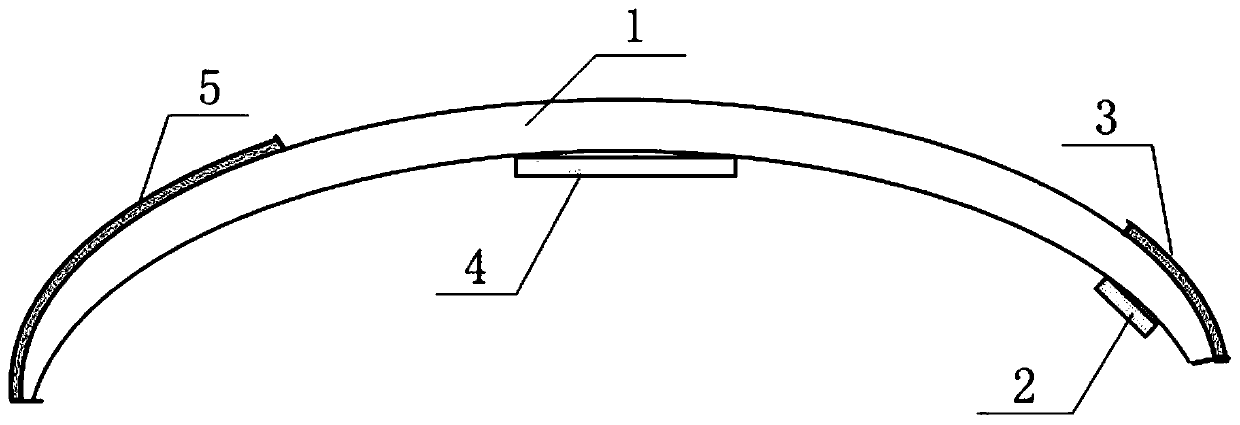Near-eye display based on holographic waveguide
A near-eye display, holographic waveguide technology, applied in instruments, optical components, optics, etc., can solve problems such as small field of view, loss of resolution, and inability to provide viewing experience effects, to increase the field of view, reduce size, The effect of improving the viewing experience
- Summary
- Abstract
- Description
- Claims
- Application Information
AI Technical Summary
Problems solved by technology
Method used
Image
Examples
Embodiment 1
[0031] Such as figure 1 , 2 As shown, this embodiment provides a near-eye display based on a holographic waveguide, including: an optical waveguide 1 and an array light source 2 arranged on both sides of the optical waveguide 1, an in-coupling optical element 3, a reflective spatial light modulator 4, an output Coupling optical element 5; the array light source 2 and the in-coupling optical element 3 are located on the opposite side of the optical waveguide 1; the opposite side of the out-coupling optical element 5 is the human eye 6 viewpoint; the light emitted by the array light source 2 passes through the input After being reflected by the coupling optical element 3, it is irradiated on the reflective spatial light modulator 4 and modulated by the reflective spatial light modulator 4, and then reflected to the outcoupling optical element 5, and the modulated light is guided out by the outcoupling optical element 5 The waveguide 1 enters the human eye 6 ; the reflective spa...
Embodiment 2
[0047] Such as Figures 5 to 7 As shown, this embodiment provides a near-eye display based on a holographic waveguide. The difference from the above-mentioned embodiment 1 is that in this embodiment, the outcoupling optical element 5 is a simple functional holographic optical element that only has the function of a mirror. , at this time, an eyepiece 8 needs to be added in front of the human eye 6 in the optical system; the human eye 6 watches behind the eyepiece 8 .
[0048] In this example, if Figure 6 , 7 As shown, when the first light-emitting unit 7 emits light, the reflective amplitude spatial light modulator will display the projection sub-image of the first viewpoint; when the light carrying information about the projection sub-image of the first viewpoint passes through the light After the waveguide 1 is totally reflected several times, it is irradiated onto the outcoupling optical element 5 (a simple functional holographic optical element with only the function of...
PUM
 Login to View More
Login to View More Abstract
Description
Claims
Application Information
 Login to View More
Login to View More - R&D
- Intellectual Property
- Life Sciences
- Materials
- Tech Scout
- Unparalleled Data Quality
- Higher Quality Content
- 60% Fewer Hallucinations
Browse by: Latest US Patents, China's latest patents, Technical Efficacy Thesaurus, Application Domain, Technology Topic, Popular Technical Reports.
© 2025 PatSnap. All rights reserved.Legal|Privacy policy|Modern Slavery Act Transparency Statement|Sitemap|About US| Contact US: help@patsnap.com



